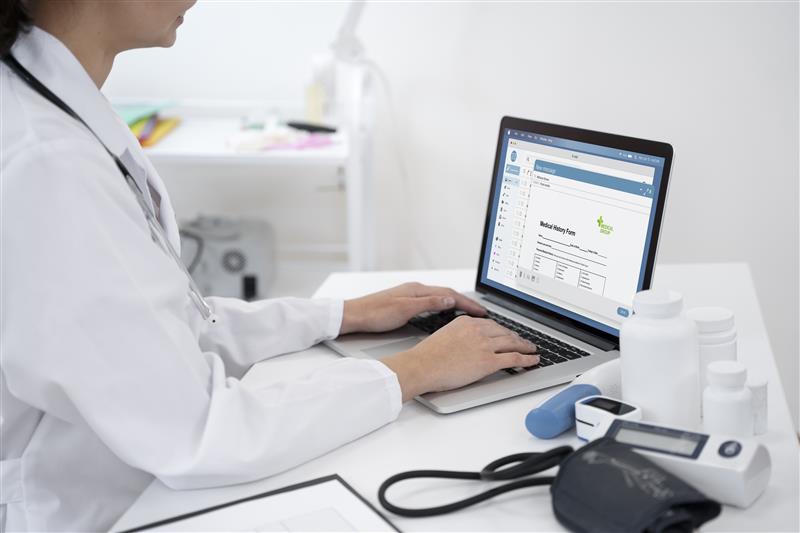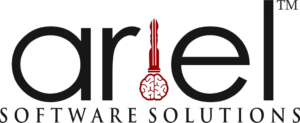
Imagine navigating a stormy sea without a compass. That’s what energy and commodity trading feels like without ETRM software and CTRM solutions. Markets swing by the minute, regulations shift like tides, and a single misstep can mean massive losses.
These platforms aren’t just tools, they’re the radar, compass, and engine room that keep trading operations on course. In this blog, we’ll break down how ETRM and CTRM solutions work, why they’re essential in today’s volatile markets, and how Ariel Software Solutions helps businesses turn complexity into clarity.
What Are ETRM and CTRM Systems
ETRM software and CTRM platforms are enterprise-level energy trading software solutions designed to manage the trading lifecycle of energy products and commodities, respectively. While they serve slightly different markets, the core functionality often overlaps. These platforms integrate data, automate workflows, enable risk analysis, and provide actionable insights through real-time dashboards and reporting.
The “E” in ETRM software stands for energy, typically focusing on oil, gas, electricity, and renewable energy. CTRM has a broader focus, encompassing agricultural products, metals, chemicals, and other tradeable commodities. These energy trading software systems serve as central digital hubs for trading desks, risk managers, compliance teams, and financial analysts.
Let’s explore the key technical components that make these ETRM solutions essential to today’s trading infrastructure.
- Trade Capture and Management:
Trade capture is the foundation. Whether trading physical commodities or financial instruments, ETRM software and CTRM systems allow users to log and manage trades with precision. Every trade contains multiple attributes, including product type, volume, delivery terms, pricing structure, counterparties, and settlement dates.These energy trading software solutions manage the entire trade lifecycle, from initiation and confirmation to settlement and post-trade analysis. This automation reduces manual errors and ensures traceability across all stages.
- Risk Management and Analytics:
In highly volatile markets, risk management is non-negotiable. ETRM solutions offer powerful tools for real-time monitoring and stress testing. Value-at-Risk (VaR) models, mark-to-market valuations, scenario analysis, and limit monitoring enable organizations to evaluate their exposure instantly and make course corrections.They help companies model price curves, run simulations, and predict outcomes in the face of market fluctuations. This is vital for making informed decisions in environments where a 1 percent price change can have millions in impact.
- Market Data Integration:
A core strength of ETRM software is its ability to consume and analyze real-time market data from multiple sources. This includes data feeds from exchanges, pricing services like Bloomberg or Reuters, and in-house analytical engines.These integrations allow traders and analysts to benchmark prices, monitor live spreads, and validate trends. Accurate, real-time data helps reduce latency in decision-making and, more importantly, reduces risk across your energy trading software ecosystem.
- Position Management:
Position tracking is critical in understanding the financial and physical standing of the company in the market. ETRM solutions consolidate all buy and sell positions, creating a unified view of exposures, inventory levels, and contractual obligations.This also ties into hedging. For instance, if a company holds long positions in crude oil, the system will track how those are offset with futures or options, ensuring effective risk coverage and compliance with internal limits using advanced energy trading software features.
- Compliance and Regulatory Reporting:
As global regulations become more stringent, compliance is not optional. ETRM software ensures that all trading activity aligns with regional and international regulations such as MiFID II, REMIT, Dodd-Frank, and EMIR.These ETRM solutions maintain a complete audit trail of actions taken, trades executed, and data accessed. Automated reporting features allow users to generate detailed compliance reports for regulators, ensuring transparency and accountability.
- Reporting and Dashboards:
Real-time dashboards provide interactive and customizable views for different stakeholders. Traders might see pricing trends and portfolio PnL, while risk managers might focus on VaR exposure and breach alerts.Energy trading software systems also support advanced reporting capabilities using BI tools or built-in analytics engines. The ability to slice and dice data by commodity, geography, trading book, or counterparty offers deep operational visibility through the ETRM software interface.
- Data Security and Integrity:
With financial and operational data at the core, ETRM software emphasizes robust cybersecurity. It features access control, end-to-end encryption, secure APIs, and strong authentication protocols.Data integrity is equally vital. ETRM solutions maintain high fidelity in data handling, ensuring all numbers used for analysis or decisions are accurate and complete. Many energy trading software platforms offer redundancy, disaster recovery, and audit trails to prevent data loss and tampering.
- Integration with Other Enterprise Systems:
Modern ETRM software does not operate in silos. It is integrated with ERP platforms like SAP or Oracle, logistics systems for tracking deliveries, treasury systems for cash flow management, and accounting platforms for reconciliations. This seamless integration allows data to flow from trade initiation to invoicing without re-entry or data manipulation, increasing accuracy and efficiency. It’s what makes energy trading software indispensable in connected digital ecosystems.
- Cloud and On-Premises Deployment:
Depending on organizational needs, ETRM solutions can be deployed on-premises or in the cloud. Cloud platforms offer scalability, faster updates, and lower upfront costs. They are particularly attractive for mid-sized businesses and fast-growing firms.However, on-premises ETRM software still holds value for companies that prioritize data sovereignty or have complex internal IT architectures. Hybrid models are also gaining traction, blending flexibility with control.
- User Interface and Customization:
Legacy energy trading software platforms were often difficult to navigate, requiring specialized training. Today’s ETRM solutions emphasize intuitive design, role-based dashboards, and drag-and-drop functionalities.They can be customized to align with specific commodities, contract types, or risk models. For example, power traders might need different screens and metrics compared to someone dealing in agriculture or metals.
The Future of ETRM and CTRM: Trends to Watch
The evolution of ETRM software is being shaped by emerging technologies and market needs. Artificial intelligence and machine learning are being embedded for predictive analytics and anomaly detection. Blockchain is being explored for secure, transparent transaction recording. Cloud-native microservices architecture is helping improve scalability and system resilience.
There is also a growing demand for mobility. Traders and analysts want access to positions, alerts, and dashboards from mobile devices to make on-the-go decisions supported by agile energy trading software frameworks.
The Future of ETRM and CTRM: Trends to Watch

ETRM software and CTRM platforms are more than just trading tools, they are strategic enablers that define how efficiently a business navigates market volatility, regulatory complexity, and digital transformation. But unlocking the full potential of these ETRM solutions requires tailored implementation, seamless integration, and a partner who understands the broader business context. That’s where Ariel Software Solutions delivers measurable impact.
At Ariel, we go beyond generic energy trading software delivery. We build and integrate customized technology frameworks that power confident, data-driven decisions in dynamic trading environments. Here’s how:
Transform Your Market Operations with Ariel Software Solutions
- Industry-Aligned Implementation: We design ETRM software and CTRM solutions that align with your unique trade flows, compliance needs, and risk management frameworks, whether in energy, agriculture, metals, or financial commodities.
- End-to-End System Integration: Our team ensures seamless integration with existing ERP platforms, logistics modules, accounting systems, and settlement engines, streamlining operations across your entire energy trading software lifecycle.
- Real-Time Data Optimization: We enable real-time market data ingestion, price tracking, and predictive analytics to drive faster, smarter decision-making under pressure.
- Risk Visibility and Compliance Readiness: From Value-at-Risk modeling to audit trail automation, our ETRM solutions help you stay compliant, reduce exposure, and meet regulatory standards without disruption.
- Scalable, Modular Architecture: Whether you’re scaling operations or entering new markets, we build flexible ETRM software systems that grow with your business, supporting both on-premise and cloud-first strategies.
- Future-Ready Engineering: Our development teams build with extensibility in mind, supporting AI-driven forecasting, intelligent reporting, and advanced automation to prepare you for what’s next.
Working with Ariel means choosing a partner that understands the intersection of trading complexity and technological innovation. We don’t just implement ETRM software; we architect capabilities that help you compete, adapt, and lead.
As ETRM and CTRM platforms evolve to meet the demands of real-time markets, the integration of AI-driven predictive analytics is becoming a game-changer. To explore how this shift is enhancing decision-making across energy and commodity trading, check out our blog: Beyond Guesswork: How AI Predictive Analytics is Transforming Decision-Making in 2025.
Conclusion
In today’s high-stakes trading environment, the ability to manage trades, analyze risks, and stay compliant is non-negotiable. ETRM software and CTRM platforms serve as mission-critical energy trading software systems that unify data, streamline operations, and deliver strategic insights. As these ETRM solutions continue to evolve, so too must the strategies companies use to deploy them.
At Ariel Software Solutions, we help organizations harness the full potential of these platforms, combining deep domain expertise with robust technical execution. Connect with us today to learn how we can transform your trading operations with smarter, scalable ETRM software.
Looking to simplify your trading operations and future-proof your systems? Contact us for a custom consultation tailored to your needs.
Frequently Asked Questions (FAQ)
1. What is ETRM software, and how is it different from CTRM?
ETRM (Energy Trading and Risk Management) focuses on energy commodities like gas, oil, and electricity. CTRM (Commodity Trading and Risk Management) includes all commodities—energy, metals, agriculture, etc. Both manage trading, risk, and compliance, but differ in market focus.
2. Who typically uses ETRM and CTRM platforms?
Trading firms, utilities, commodity producers, and financial institutions. Users include traders, analysts, risk managers, and compliance teams.
3. What are the core benefits of ETRM software?
- Full trade lifecycle management
- Real-time risk analytics
- Regulatory compliance (e.g., MiFID II, EMIR)
- Market data integration
- Operational efficiency through automation
4. How does ETRM support risk management?
Tools like Value-at-Risk (VaR), scenario analysis, mark-to-market, and limit monitoring to help manage exposure and adjust strategies.
5. Can it integrate with ERP or accounting systems?
Yes. Modern ETRM software integrates with ERP, finance, logistics, and market data platforms for seamless workflows and accurate reporting.
6. What deployment options are available
Cloud, on-premise, or hybrid. The cloud offers flexibility and faster updates; on-premise suits companies with strict data controls.
7. How does Ariel Software Solutions support ETRM needs?
Ariel Software Solutions offers custom ETRM/CTRM solutions with real-time data, risk modeling, full system integration, and flexible deployment—tailored to your business goals.




